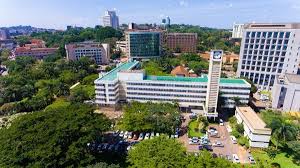Kampala: A Glimpse into Uganda’s Thriving Capital

Introduction
Kampala, the capital city of Uganda, holds vital importance as the political, economic, and cultural heart of the country. With its rich history, vibrant communities, and rapid development, Kampala serves as a hub for national and international activities. As the city continues to grow and evolve, understanding its significance helps highlight the changing landscape of East Africa.
Historical Overview
The city of Kampala was originally built on seven hills, and its name is derived from the word ‘impala,’ reflecting the wildlife that once thrived in the area. Established as a collection of villages, it became the capital of Uganda in 1962 upon independence from British colonial rule. Since then, it has developed into a bustling metropolis known for its mixed heritage, integrating numerous cultures, traditions, and languages.
Economic Significance
Kampala’s economy is buoyed by diverse sectors, including trade, manufacturing, and tourism. Recent developments in infrastructure, such as roads and transport systems, have attracted domestic and foreign investments. Major companies are increasingly setting up operations in Kampala, contributing to economic growth and job creation. The city is also a prominent destination for tourists, with landmarks such as the Uganda Museum and the Kasubi Tombs, which are UNESCO World Heritage sites.
Cultural Diversity
Another notable aspect of Kampala is its cultural diversity. The city is home to several ethnic groups, which contributes to a rich tapestry of traditions, food, music, and festivals. Events like the Kampala City Festival and the Nyege Nyege Festival showcase the local culture and attract visitors from across the globe. The culinary scene is equally vibrant, offering an array of local and international cuisines, reflecting the city’s multicultural makeup.
Current Challenges and Future Outlook
Despite its growth, Kampala faces challenges, including urban congestion, inadequate housing, and public service delivery. The local government is implementing various strategies to tackle these issues, such as the Kampala Capital City Authority (KCCA) initiatives aimed at improving urban planning and infrastructure development. Looking forward, as Uganda continues to invest in its human capital and infrastructure, Kampala is poised to further establish itself as a key player in East African development.
Conclusion
Kampala represents a dynamic fusion of history, culture, and economic potential. As it progresses into the future, the city stands not only as a testament to Uganda’s journey but also as a beacon for growth in the region. For readers interested in Africa’s unfolding narrative, understanding Kampala’s role offers valuable insights into the continent’s broader development trajectory.









